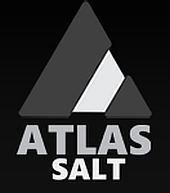 PASINEX DISCOVERS HIGH-GRADE PRIMARY SULPHIDE MINERALIZATION BENEATH THE MAIN OXIDE ZONE AT PINARGOZU
PASINEX DISCOVERS HIGH-GRADE PRIMARY SULPHIDE MINERALIZATION BENEATH THE MAIN OXIDE ZONE AT PINARGOZU
Pasinex drills 34 m of 35.1% Zn at Pinargozu
2016-09-07 00:38 ET – News Release
Mr. Steve Williams reports
Pasinex Resources Ltd. has released outstanding results from 32 underground drill holes from the Pinargozu zinc mine in Turkey. Drill hole PPU16-030 intersected 34 metres at an average grade of 35 per cent zinc. Bonanza-grade zinc intersected in some drill holes approaches the grade of pure sphalerite (zinc sulphide) mineralization. Drilling was undertaken between early March and mid-May this year. These results now clearly show zinc mineralization with high-grade sulphide roots. This has major positive implications for the exploration potential of Pinargozu.
SUMMARY HIGHLIGHTS OF DRILL ASSAY RESULTS
Core-length
Drill hole interval Zn grade Core recovery From (metres)
number (metres) (i) (%) (ii) (%) (iii)
PPU16-018 9.8 49.4 58.2 21.6
PPU16-020 8 55.6 84.7 18.5
including 4.9 62.5 90.8 21.6
PPU16-024 8.6 40.8 65.1 23.5
and 3.3 54.7 79.7 45.7
PPU16-028 10 54.4 78.4 27
including 6 62.3 88.5 29.6
PPU16-030 34 35.1 58.7 22.4
PPU16-031 19.4 41.4 53.6 19.1
(i) True widths have yet to be determined.
(ii) Zinc mineralization is predominantly a mix of
non-sulphide (smithsonite) and sulphide (sphalerite)
material.
(iii) Grades for intervals with poor core recovery
may not truly represent the complete mineralized
interval.
Steve Williams, chief executive officer of Pasinex, said: “This exciting discovery is a game changer for Pasinex. We have now traced high-grade zinc mineralization deeper in the plumbing system, from the shallower weathered zone deeper into a mixed zone containing primary sulphides. We look forward to the next batch of drill results from Pinargozu as we test for new dimensions to this extraordinary zinc showing.”
About 14 of the 32 drill holes intersected mineralization above the threshold for direct shipping material. This reporting threshold is defined as three metres averaging 25 per cent zinc. A sharp cut-off is observed between high-grade mineralization and the surrounding host rock, and is typical of carbonate replacement deposits. Most encouragingly, narrow lenses of lower-grade mineralization increase to thicker higher-grade lenses over short distances. Drilling was undertaken from drill pads on the 690-metre level. Fan drilling from the underground stations was performed in both lateral and vertical planes to provide coverage. Only six such holes did not intersect any significant mineralization.
Horzum zinc trend (HZT)
The Pinargozu mine is located in southern Turkey. Pinargozu is one of several exploration targets along the Horzum zinc trend (HZT), which hosts a series of carbonate-replacement-deposit-type mineral occurrences, extending north for at least eight kilometres from the high-grade Horzum mine. The HZT has in the past been prospected and mapped to some extent but has not previously been systematically explored. Pasinex is the first to apply advanced exploration technology and CRD exploration concepts and models to the HZT district.
Quality control and data verification
Samples were assayed at the SGS laboratory in Ankara. Zinc, lead and silver assays were performed using multiacid (four-acid) digestion/ICP-AES package (33 elements): Zn (lower detection limit: one part per million and upper detection limit: 10,000 ppm), code ICP40B, and for high-grade zinc, multiacid (four-acid) digestion/AAS package, code AAS43B, with detection up to 100 per cent Zn.
Very high zinc assays are checked by ICP90Q — sodium peroxide fusion, ICP finish (detection 0.01 per cent to 100 per cent). Analytical accuracy and precision are monitored by the submission of blank duplicate samples inserted at regular intervals into the sample train by Pasinex personnel. Duplicate pulp samples are sent to the ALS laboratory in Izmir as an umpire ISO-compliant check to confirm analytical accuracy. Drill-core samples were prepared at a standard non-certified facility at the Horzum mine. External quality control on sample preparation is assured by reference to a regular selection of duplicate coarse reject samples, which are now sent to SGS. SGS-Ankara’s quality system complies with the requirements for the international standards ISO 9001: 2000 and ISO 17025: 1999.
Qualified person
EurGeol, PGeo, John Barry, a qualified person as defined by NI 43-101, has supervised the preparation of the scientific and technical information that forms the basis for this news release. Mr. Barry is responsible for all aspects of the work, including quality control and data verification, and has confirmed all procedures, protocols and methodologies used. Mr. Barry is a director of the company.
http://pasinex.com/press-releases/
































